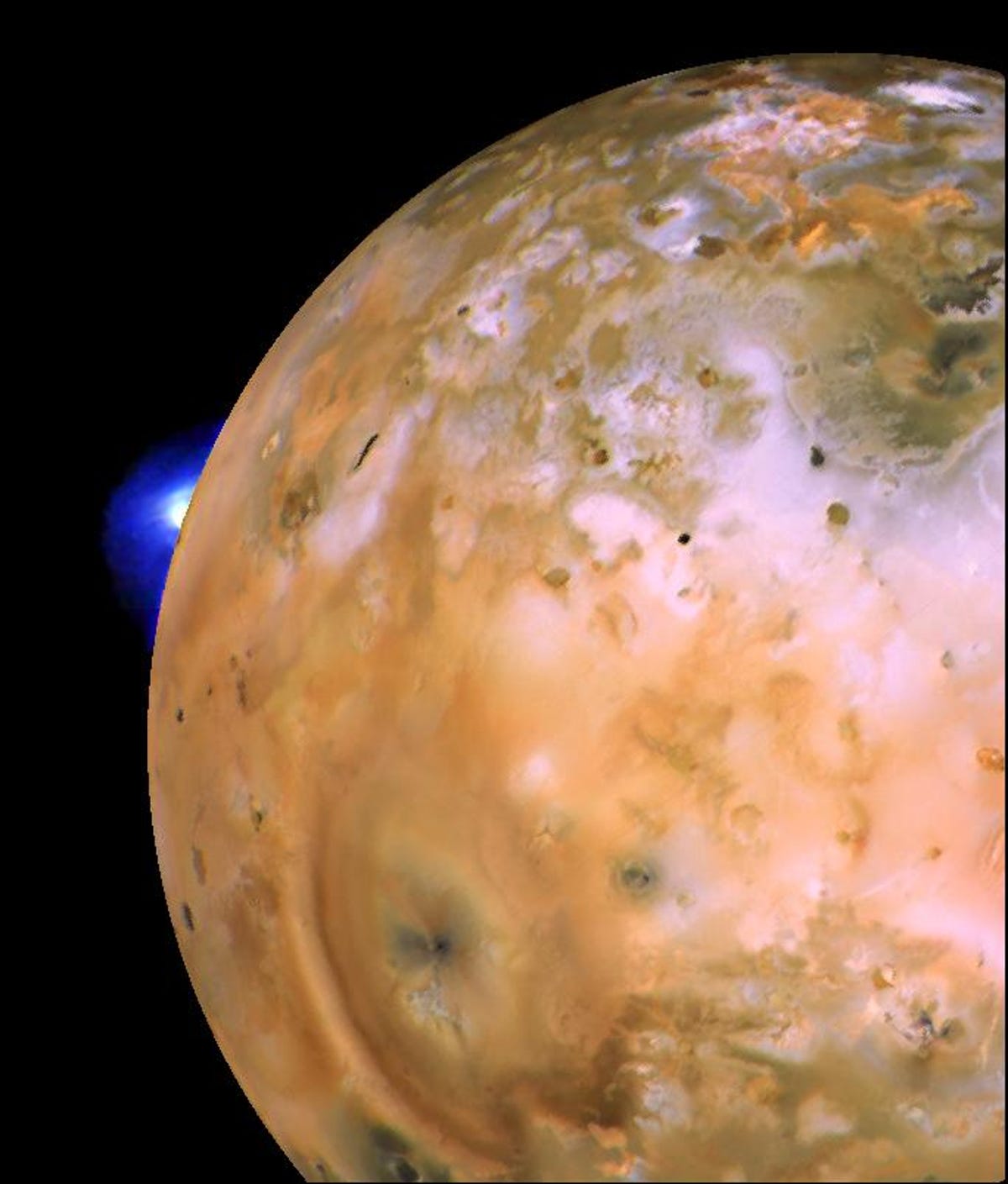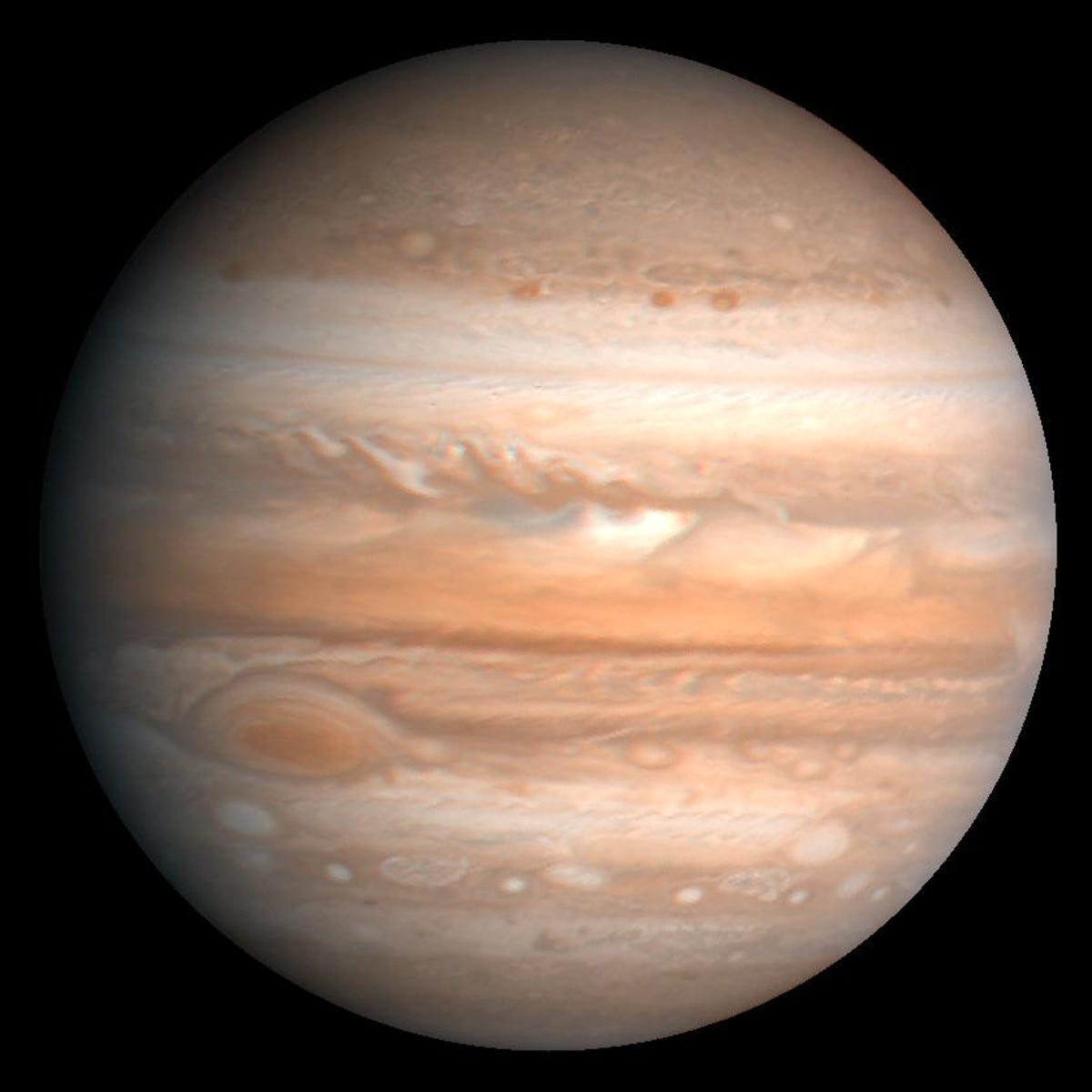50 years of talking to spaceships (pictures)
NASA's Deep Space Network, one of the world's largest and most powerful communications systems ever, celebrates a half century of exploration -- and some amazing images.

Active volcanoes aplenty
As the 50th anniversary rolls around -- Dec. 24 is the date -- NASA notes that its Deep Space Network has proved so important in so many missions over the decades that network team members jokingly use the phrase: "Don't leave Earth without us." Pictured above is a shot from Voyager 1, which discovered active volcanoes on Jupiter's moon Io.
The network allows space researchers on Earth to keep tabs on spacecraft traveling far, far from home -- NASA calls it "the largest and most sensitive scientific telecommunications system in the world." To commemorate the anniversary, we've compiled this set of images from spacecraft near and far.
Collision on Tempel 1
Comet Tempel 1 67 seconds after it obliterated the impactor from NASA's Deep Impact spacecraft.
The only Earth visitor to Neptune
Voyager 2 paid a visit to the solar system's farthest planet from the Sun when it swung by Neptune to take a few snapshots between August 16-17, 1989. In putting Neptune in its sights for about two-and-one-half rotations, Voyager 2's trove offers the most complete set of full-disk Neptune images that the spacecraft acquired.

Clouds on Jupiter
This is a processed color image of Jupiter based on an image captured by NASA's Voyager spacecraft in 1979.
Goldstone Deep Space Complex
The Goldstone Deep Space Communications Complex in California's Mojave Desert is one of three complexes that comprise NASA's Deep Space Network. The other two are situated near Madrid, Spain, and near Canberra, Australia. The space agency says that all the DSN antennas are steerable, high-gain, parabolic reflector types.
Present at the creation
This image, taken in 1964, documents the construction of an antenna known as DSS-14 at the NASA Deep Space Network Goldstone complex in the Mojave Desert.
Touchdown on the Red Planet
NASA's Viking 1 was the first spacecraft to land safely on Mars. This color picture was taken July 21, 1976 -- the day after Viking 1's successful landing on the planet.
Victoria Crater on Mars
A 2009 image of the Victoria Crater in the Meridiani Planum region of Mars.
Testing, testing
The latest mission to Mars involves the MAVEN spacecraft, which blasted off in November 2013. This photo, from the preparation phase two months earlier, shows engineers at the Kennedy Space Center's MIL-71 facility running compatibility tests to ensure that MAVEN will be able to relay data back through the Deep Space Network.
No rain in Spain -- not this day
Preparing for Voyager 2 spacecraft's planned 1989 flyby, a crew in 1970 works on the antenna known as DSS-62 at NASA's Deep Space Network complex near Madrid, Spain. Three antenna complexes were established around the globe so that even as Earth rotated, the spacecraft would always be above the horizon of at least one complex. The other two are located in Canberra, Australia, and Goldstone, Calif.
Venus up close
This 1991 image of Venus' surface was taken during NASA's Magellan mission.
Close approach to Saturn
In this 1980 picture of Saturn, taken by NASA's Voyager 1, you can make out Dione, one of Saturn's inner satellites, which appears as a colored spot below Saturn's South Pole.
Mercury
Among its other laurels, NASA's Mariner 10 spacecraft goes down in history as the first to visit Mercury in 1974 and 1975.
Saturn's rings, the Earth and the Moon
NASA's Cassini spacecraft uses its wide-angle-lens camera to photograph Saturn's rings, our planet Earth and its moon in the same frame.

